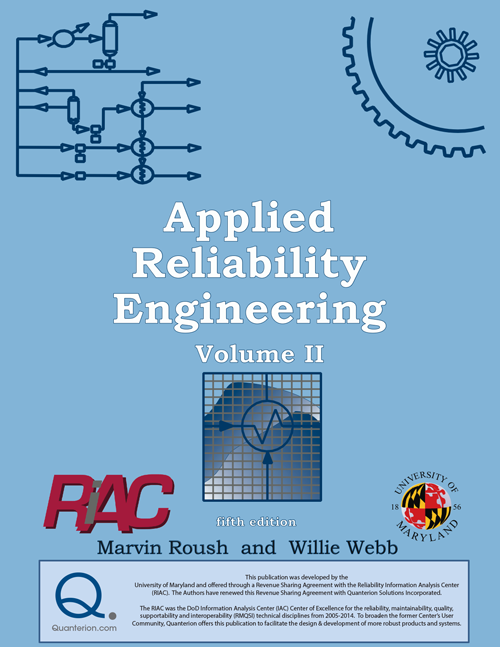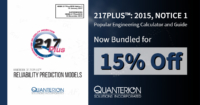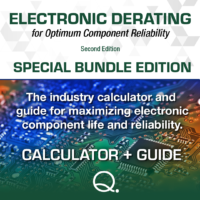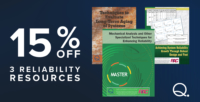| 6 System Modeling and Analysis |
231 |
| 6.1 Introduction |
231 |
| 6.1.1 Definition of Functional Elements |
231 |
| 6.2 Reliability of Simple Systems |
232 |
| 6.3 Reliability Block Diagram Method |
232 |
| 6.3.1 Series System Models |
232 |
| 6.3.2 High-Level Versus Low-Level Redundancy |
237 |
| 6.3.3 M-out-of-N Redundancy |
237 |
| 6.3.5 Dependent Failures |
239 |
| 6.3.6 Conditional Probability Approach |
241 |
| 6.4 Reliability Obtained Using a Signal Flow Graph |
243 |
| 6.4.1 A Few Elements of Set Theory |
244 |
| 6.4.2 Cut-Set Method for Determining System Unreliability |
247 |
| 6.4.3 Boolean Algebra |
249 |
| 6.5 System Failure Analysis |
252 |
| 6.6 Fault Tree Analysis |
253 |
| 6.6.1 Fault Tree Building Blocks |
254 |
| 6.6.2 Fault Tree Construction |
258 |
| 6.6.3 Fault Tree Evaluation |
259 |
| 6.7 Event Tree Construction |
264 |
| 6.7.1 Sample Event Tree for Nuclear Reactor Safety Analysis |
267 |
| 6.8 Simulation Modeling for System Reliability Analysis |
268 |
| 6.8.1 Why Use Simulation? |
268 |
| 6.8.2 Advantages and Disadvantages of Simulation |
269 |
| 6.8.3 Monte Carlo Simulation |
270 |
| Exercises |
277 |
| 7 Designing for Reliability, Maintainability, and Safety |
289 |
| 7.1 Establishing and Allocating Reliability Requirements |
289 |
| 7.1.1 Simplest Possible Method of Allocation |
289 |
| 7.1.2 Apportionment Based Upon Complexity |
290 |
| 7.1.3 Reliability Improvement Allocation |
291 |
| 7.1.4 Optimization of Reliability Improvement Allocation |
292 |
| 7.1.5 Albert’s Method |
293 |
| 7.2 Legal Issues |
295 |
| 7.2.1 The Changing Landscape of Liability |
297 |
| 7.2.3 Examples of Design Defect Cases |
299 |
| 7.2.4 Manufacturing Defect Cases |
304 |
7.2.5 Strategies for Protection against Product Liability
Lawsuits |
306 |
| 7.2.6 Inspection and Testing Procedures |
307 |
| 7.3 Failure Mode Analysis (FMA) and FMA Follow-Up |
309 |
| 7.3.1 What is an FMA? |
309 |
| 7.3.2 FMA Follow-Up |
309 |
| 7.3.3 Purpose of the FMA |
309 |
7.3.4 Use of an FMA Rather Than a Failure Mode and Effect
Analysis |
309 |
| 7.3.5 Development of the FMA |
310 |
| 7.3.6 Steps in Developing the FMA |
310 |
| 7.5 Sneak Analysis |
322 |
| 7.5.1 Sneak Circuits and Their Analysis |
323 |
| 7.5.2 Mercury Redstone Incident |
326 |
| 7.6 Topological Techniques |
328 |
| 7.6.1 Single-Line (No-Node) Topograph |
330 |
| 7.6.2 Double-Ground Node Topograph |
330 |
| 7.6.3 Double-Power Node Topograph |
331 |
| 7.6.4 “H” Pattern Topograph |
331 |
| 7.7 Sneak Circuit Guidelines |
331 |
| 7.8 Vendors of Sneak Circuit Software |
332 |
| 7.9 Sneak Label Example |
332 |
| 7.10 Maintainability Considerations |
333 |
| 7.10.2 Maintainability and Reliability |
334 |
| 7.10.3 Maintainability as a Program Element |
334 |
| 7.10.4 Maintainability Terms and Definitions |
334 |
| 7.10.6 Maintenance-Time Definitions |
336 |
| 7.10.7 Maintenance-Time Composition |
337 |
| 7.10.8 Corrective-Maintenance-Time Composition |
337 |
| 7.10.9 Delay-Time Composition |
338 |
| 7.10.10 Modification Time Defined |
338 |
| 7.10.11 Maintainability Parameters |
338 |
| Exercises |
373 |
| 8 Life Models for Repairable Items |
379 |
| 8.1 Introduction |
379 |
| 8.2 Maintenance and Replacement Schemes |
379 |
| 8.2.1 Organizational Maintenance |
380 |
| 8.2 2 Intermediate Maintenance |
381 |
| 8.2.3 Supplier/Manufacturer/Depot Maintenance |
381 |
| 8.3 Repair Policy |
382 |
| 8.3.1 Nonrepairable Item |
382 |
| 8.3.2 Partially Repairable System |
382 |
| 8.3.3 Fully Repairable System |
383 |
| 8.4 The Renewal Process |
384 |
| 8.5 Reliability Centered Maintenance |
387 |
| 8.5.1 Maintenance Strategies |
388 |
| 8.5.2 The “Bathtub Curve” Fallacy |
389 |
| 8.5.3 RCM Program Development |
393 |
| 8.6 Reliability of Dynamic Systems |
393 |
| 8.7 Introduction to Markov Modeling |
394 |
| 8.7.1 A Markov Model |
396 |
| 8.7.2 Discrete Markov Chains |
398 |
| 8.7.3 Continuous Markov Processes |
401 |
| 8.8 Transition Rate Concepts |
402 |
| 8.8.1 Binary Model for a Repairable Component |
403 |
| 8.8.2 Two Dissimilar Repairable Components |
404 |
| 8.8.3 Two Identical Repairable Components |
406 |
| 8.8.4 Cumulated States |
406 |
| Exercises |
409 |
| 9 Reliability Testing |
413 |
| 9.1 Introduction |
413 |
| 9.2 Reliability Testing |
413 |
| 9.2.1 Early Product Development Testing |
414 |
| 9.2.2 Reliability Development/Growth Testing |
415 |
| 9.2.3 Reliability Qualification Testing |
415 |
| 9.2.4 Production Reliability Acceptance Testing |
415 |
| 9.2.5 Environmental Stress Screening |
415 |
| 9.3 Early Product Development Testing |
416 |
| 9.3.1 Traditional Temperature/Humidity Tests |
416 |
| 9.3.2 Pressurized Humidity Testing |
417 |
| 9.3.3 Development of HAST Systems |
417 |
| 9.3.4 Dual-Vessel HAST Systems |
418 |
| 9.4 Reliability Growth |
418 |
| 9.4.1 Objectives of Reliability Growth |
418 |
| 9.4.2 Requisites of Reliability Growth |
419 |
| 9.4.3 Avoid a Common Pitfall during Reliability Growth |
419 |
| 9.4.4 Benefits of Reliability Growth |
419 |
| 9.4.5 Process of Reliability Growth |
419 |
| 9.5 Reliability Growth Models |
420 |
| 9.5.1 Discrete Reliability Growth Models |
420 |
| 9.5.2 Continuous Reliability Growth Models |
421 |
| 9.6 Accelerated Testing |
424 |
| 9.6.1 Acceleration Methods |
425 |
| 9.7 Environmental Stress Screening (ESS) |
426 |
| 9.7.1 Environmental Stresses |
427 |
| 9.7.2 Stresses Applied to Product Under Test |
430 |
| 9.8 Demonstration Testing |
433 |
| 9.9 Probability Ratio Sequential Test (PRST) |
445 |
| Exercises |
457 |
| 10 Reliability Management |
461 |
| 10.1 Corporate Policy for Reliability |
461 |
| 10.2 Integrated Reliability Programs |
461 |
| Appendices |
495 |
| A Notation |
497 |
| B Definitions |
501 |
| C Rules of Boolean Algebra |
509 |
| D Statistical Tables |
513 |
| Table D-1 Standard Normal Cumulative Distribution Function |
515 |
| Table D-2 Critical Values of Student’s t Distribution |
519 |
| Table D-3 Critical Values of Chi- Square χ2 α Distribution Function |
521 |
| Table D-4 Critical Values of the Kolmogorov-Smirnov Statistic |
523 |
| Table D-5 F-Cumulative Distribution Function, Upper 1 Percentage Points |
524 |
| Table D-6 F-Cumulative Distribution Function, Upper 5 Percentage Points |
526 |
| Table D-7 F-Cumulative Distribution Function, Upper 10 Percentage Points |
528 |
| E References |
531 |
| F Answers to Selected Exercises |
539 |
| Subject Index |
543 |








